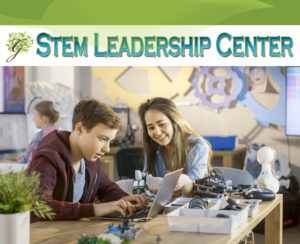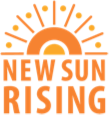We are in a time of mass collaboration, a time when there is no longer a comprehensive textbook a marine biologist professor can offer to their students. WoRMS, the World Register of Marine Species, is an online database in which marine research is immediately updatable. Global partnerships in research can be made quickly. The information on WoRMS is added to and changed too rapidly for the material to be comprehensively published in a text book format, but you can purchase a monthly electronic backup copy or download and backup a daily version. Don’t fool yourself in thinking your field is different.
Successful mass-collaboration environments have had to risk failure and exposure along the way. Jimmy Wales talks about the early days of Wikipedia in a recent interview . “We were able to have some bad things happen until we figured out what we had to do about that.” Not every organization has that luxury.
Why We Collaborate? An NPR TED Radio Hour
A dynamic online collaborative environment is not the same thing as a static webpage or a manufactured artifact. It still requires a hierarchy that provides structure and rules, but it allows for the imperfect, yet sometimes brilliant scattering of contributions from the community. This dynamism respects the lessons learned in Hurricane Katrina. Atul Gawande, in his book The Checklist Manifesto, revisits the stories of FEMA’s and Walmart’s response in the aftermath of Hurricane Katrina. FEMA used a centralized, top-down leadership style which failed to provide relief until days after the tragedy. Walmart, on the other hand, used a decentralized entrepreneurial initiative. Gawande says; “the real lesson is that under conditions of true complexity—where the knowledge required exceeds that of an individual and complexity reigns—efforts to dictate everything from the center will fail. People need room to act and adapt.” Hierarchical leaders, like FEMA in its reaction to Katrina, delegate limited amounts of power. Twenty-first century leaders, like Walmart in its reaction to Katrina, empower leaders at all levels and make them accountable to commitments to a greater vision.
How do these lessons trickle down to students? 4th grade Virtual World students are learning to collaborate on Google Docs, learning how to work through the frustration when edits are erased by a teammate with a different idea, allowing parents and teachers to see live the thought processes of construction of a thought and add feedback in the moment, trying out with flexibility new ideas and getting feedback from peers different images, phrasing, and use of white space. College students are collaborating in the Wikipedia environment with authors from around the world, they are using tools to surf blog posts on religious conflicts happening in Pakistan, Nigeria, Bosnia, and China, they are using for the tools like Google Hangouts to meet with group members virtually from the comfort of the home they are spending their weekend at. Another professor has their students blogging throughout the semester and commenting on other’s blogs. Like Jimmy Wales in the days of Wikipedia start-up, professors read each post and comment in the beginning then quickly become overwhelmed and must give up the ability to control and comment on it all.
This new atmosphere requires an attitude that failure and imperfection are part of a process to get to a final presentation. This new 21st century reality of mass collaboration means risking that your opinion stated clearly and publically will (hopefully) grow and change and evolve. It means that you risk leaving behind a footprint that embarrasses you in the future. It means recognizing that the media and public’s appetite for scandal will grab hold of a mistake and enlarge it to thousand fold repetition, and relegate to the back pages news of success and final landings. It means that we are all invited to become an active participants in building a future and creating a beautiful wake.
Here’s my take-away for parents and kids…
- Safety Lecture Always ponder worst case scenarios and brainstorm the ‘in case of emergency’ procedures.
- Fly Demonstrate risk-taking.
- Have fun in the air Be willing to fail (with a parachute and money to rebuild the plane).
- Try Someplace New Next Time Build risk-taking into life (What new digital artifact did you build this week? What comment or edit did you leave behind on a collaborative space? Where are the stopping points to polish a finished-so-far product?).





1 comments
Stanford calls this the difference between a closed and open mindset
http://static.guim.co.uk/sys-images/Guardian/Pix/pictures/2012/3/15/1331835228323/Taschen-book-mindsets-007.jpg